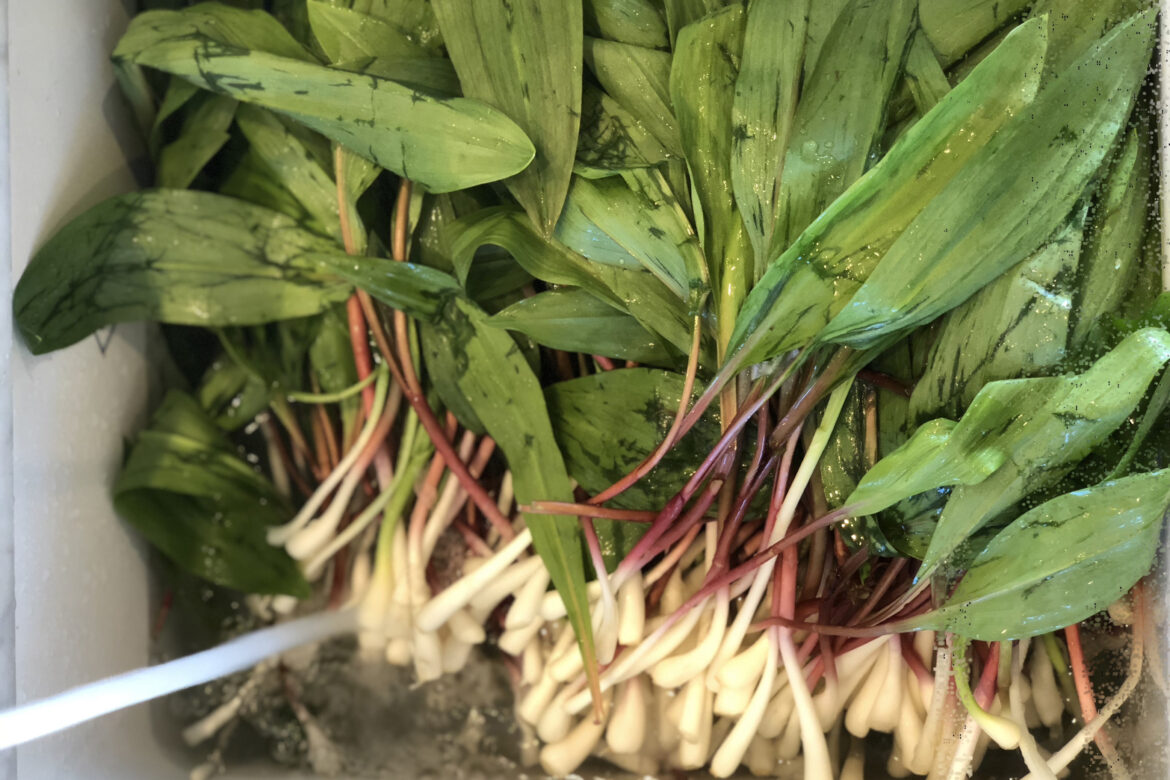As I’ve written before, spring in the Hudson Valley can be a bit of a bummer. It’s muddy, the weather can feel like Mother Nature’s extended April Fool’s Day practical joke and patrolling the garden for spring growth is an exercise in futility.
There are a million little signs that whisper spring at my place: the house flies that gather for one last hurrah and then up and die by the handful on the windowsills; the tiny artichokes (imported from California, of course) that make their way onto our table, fried whole to a crisp in olive oil and dusted with crunchy sea salt; the winter coats and boots that retire to the downstairs closets to make way for the bright basket of flip-flops, my favorite day-to-evening garden clogs and barely there canvas jackets.
But few things are as exciting as the arrival of wild ramps in the woods by the side of the road in Canaan.
How to Forage for Ramps
I mark the event on my calendar and set it to repeat every year until the end of time. I put reminders in my iPhone. I have the patch mapped on my GPS, along with the longitude and latitude of local elderberry bushes, bittersweet, my favorite spring pinecones for making syrup, the local freshwater springs for filling up jugs and my surefire spots for watercress. Drive by the spot a week too early and the blanket of green won’t be there yet. A few weeks later and some other, less edible weed will have taken over the base of the forest.
Unlike foraging for the docile chanterelle or morel, or the free-floating cress, ramps will fight with you. You’ll spend the evening with an icepack on your lower back, and you’ll understand why my advice to quit all unnecessary exercise, including and especially CrossFit, stands. Bring your nastiest knives and show the woods who’s boss (hint: the woods is boss). Wear gloves. Sip electrolytes. Bring friends.
Important to note at this point that responsible ramp foraging is critical to the ecosystem of the woods and will ensure that your patch will remain healthy year after year. My own method is to only forage in ramp patches that are larger than a football field, and to only take a few every few feet. Clipping at the base of the bulb, rather than taking the roots, not only keeps your patch healthy, but it also makes cleaning at home much easier.
If you’re lucky, you’ll also run into some fiddlehead ferns on your trek. They grow in roughly the same spot and during the same season as ramps. This makes for an exciting one-two harvest, and a very busy afternoon.
How to Use Ramps
Once home, the job has just begun. The cleaning begins. It usually requires a few glasses of wine and a relentless blast from the hose to clean them and separate into piles of ramp leaves verses ramp bulbs. It’s a job best done with a buddy or a teenager who needs an alternative to their iPhone…and all must bring their elbow grease.
Arguably gluttonous, I always have too many ramps than I know what to do with. The blade-like tops make a great pesto or simple puree, which I freeze into cubes, for use later in the year. They also make a decent plate of wilted greens for a vegetable-deprived spring dinner, but it’s the pale-bottomed ramp bulb that’s the prize. I pickle them by the case and still never have enough jars to last me though the summer.
Sweet rice wine vinegar is the perfect foil for the bright, mildly garlicky crunch of the ramp. I fork a puddle of pickled ramps beside a slab of pâté or atop a dark rye smørrebrød and herring…but that makes it sound like I really put a ton of forethought into it—usually I just eat them straight from the jar while standing barefoot in front of the refrigerator. And I rarely give these beauties away as gifts. These, I hoard.
You will need about six pint jars for canning or, if you’re not “putting them up,” just some jars for keeping in the fridge for the few weeks they’ll last. I like to use small jars because I never eat a huge amount in one sitting. But you can also just make one or two larger batches and fork out your servings from that.
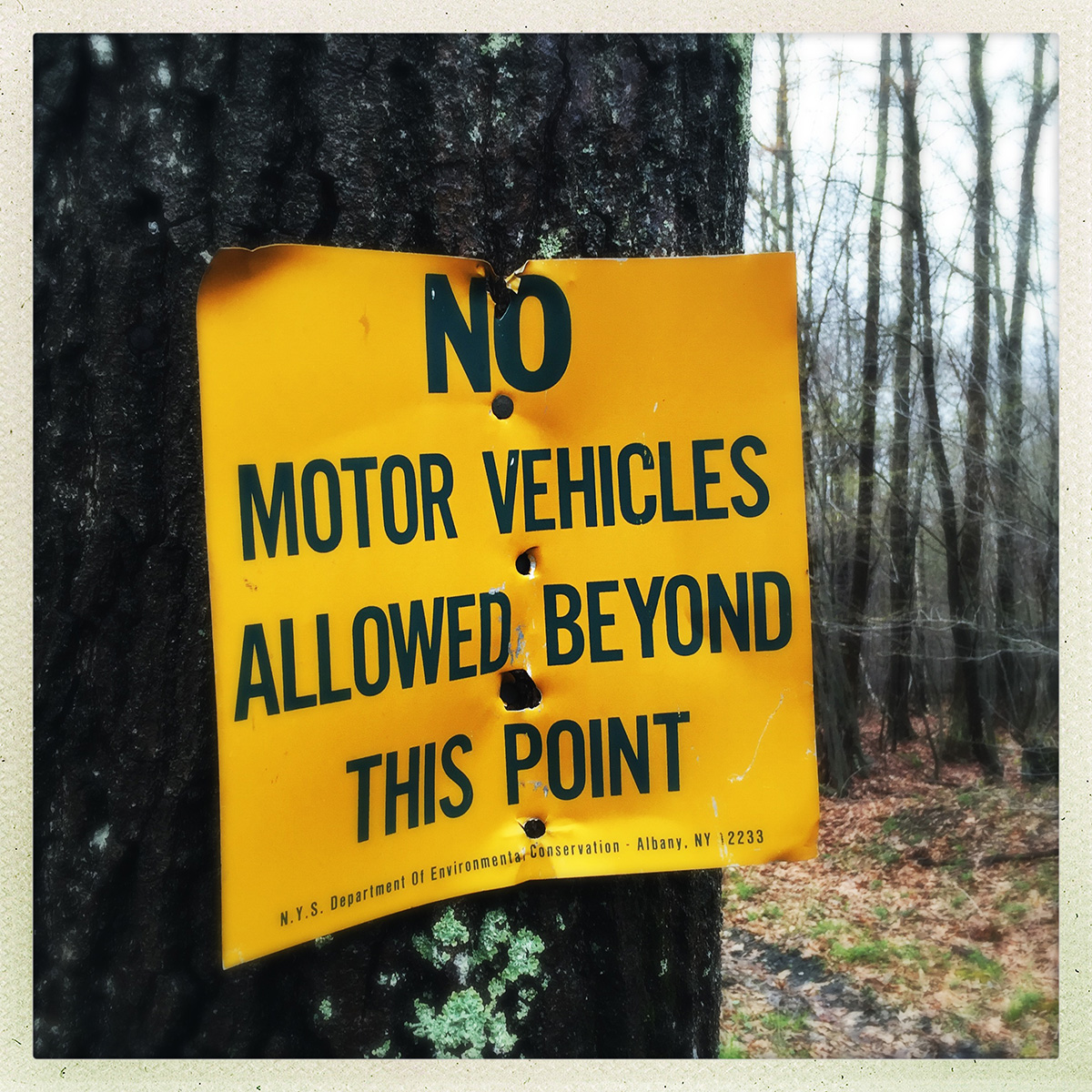

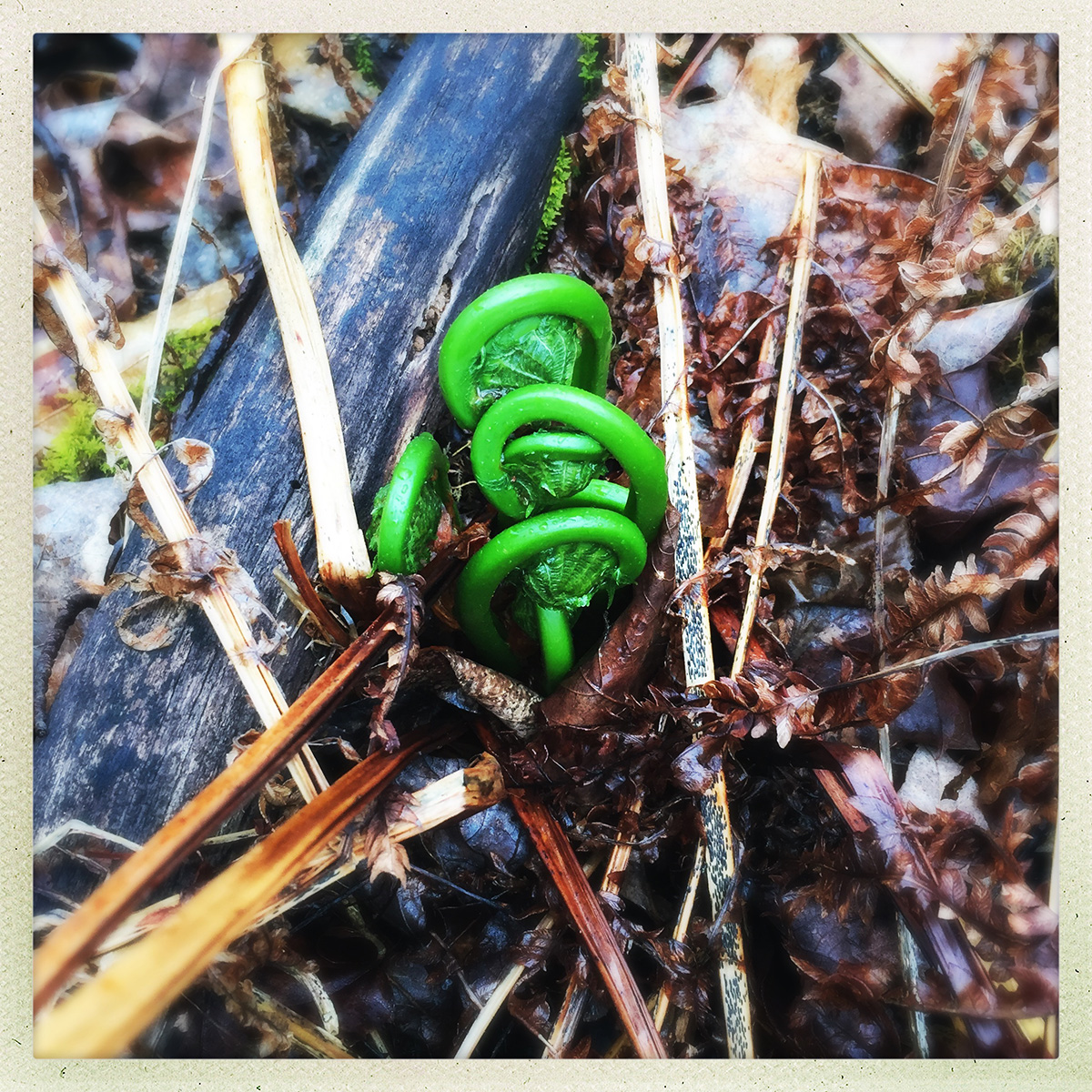
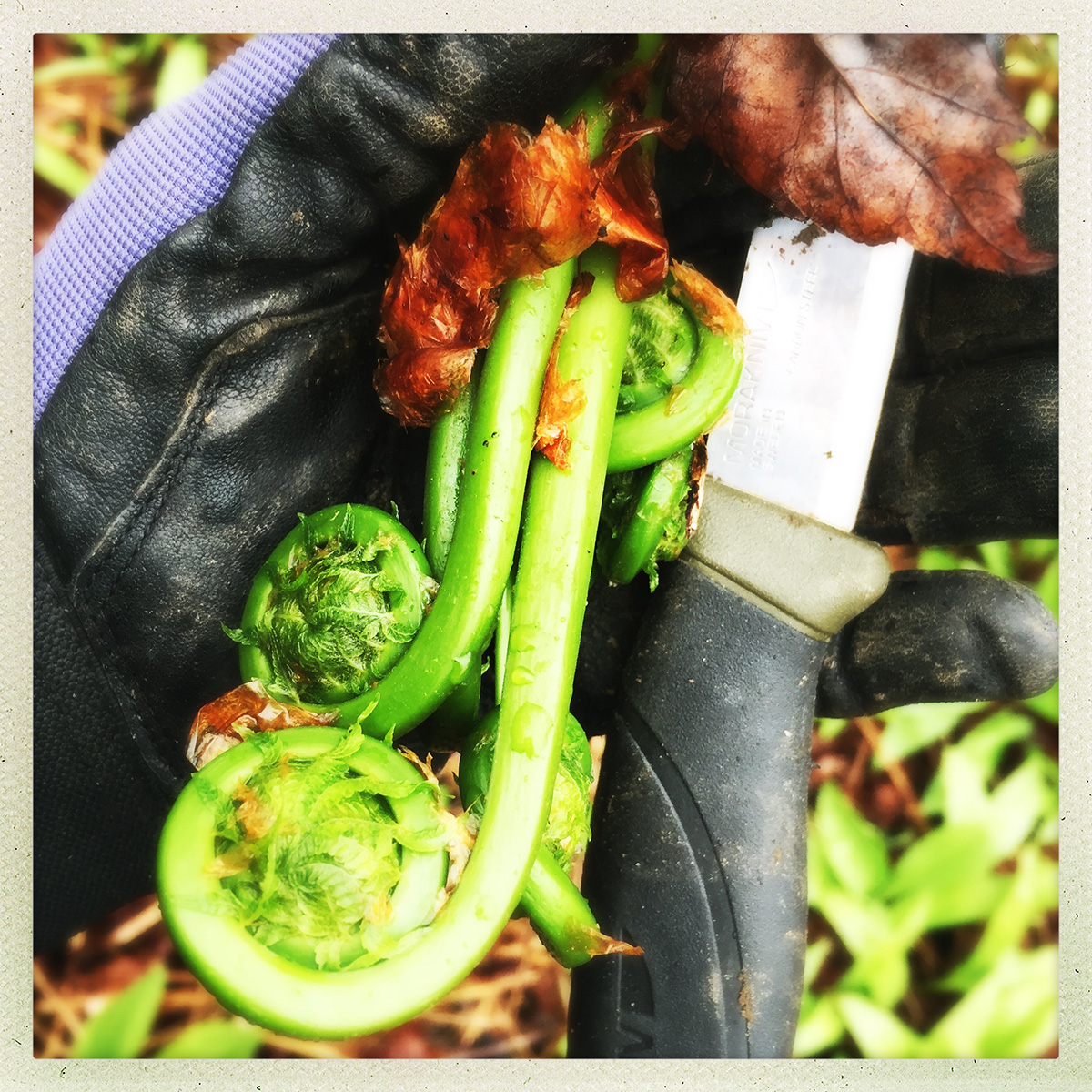
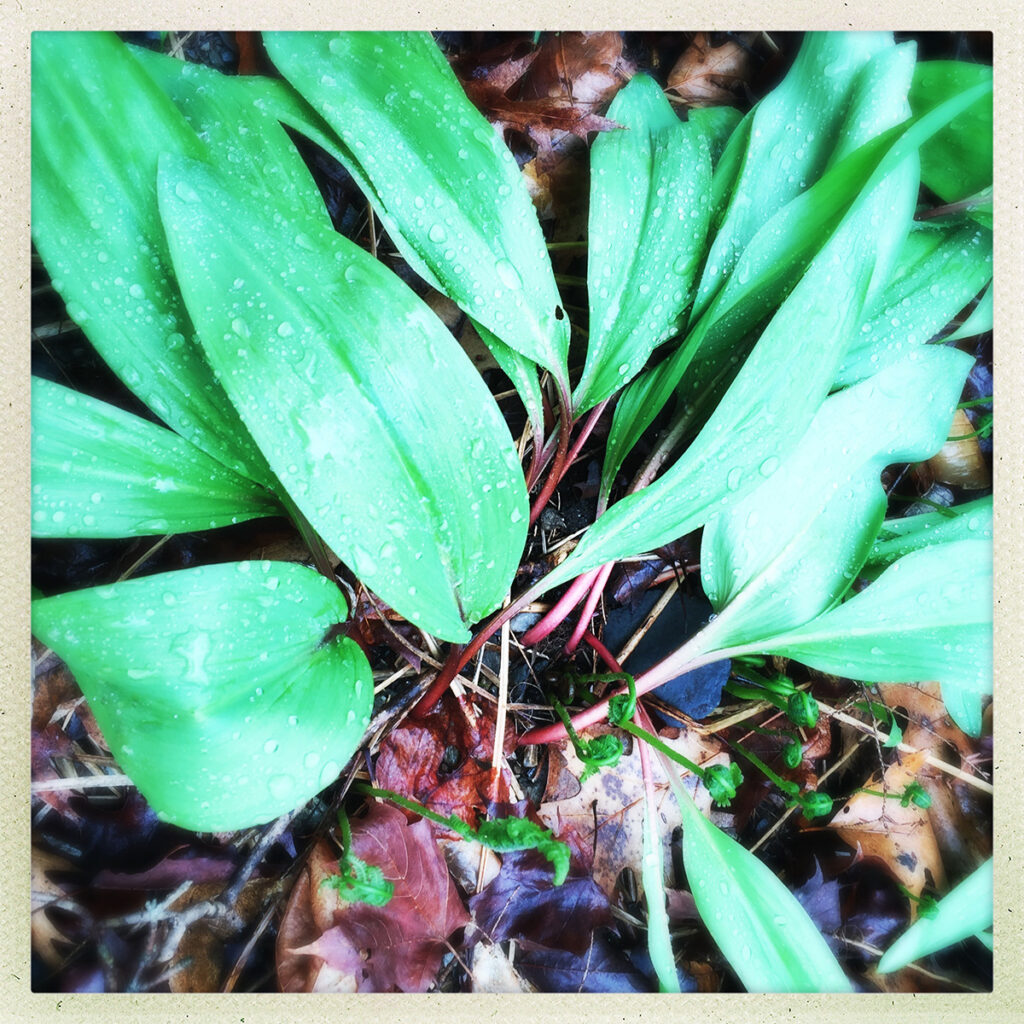
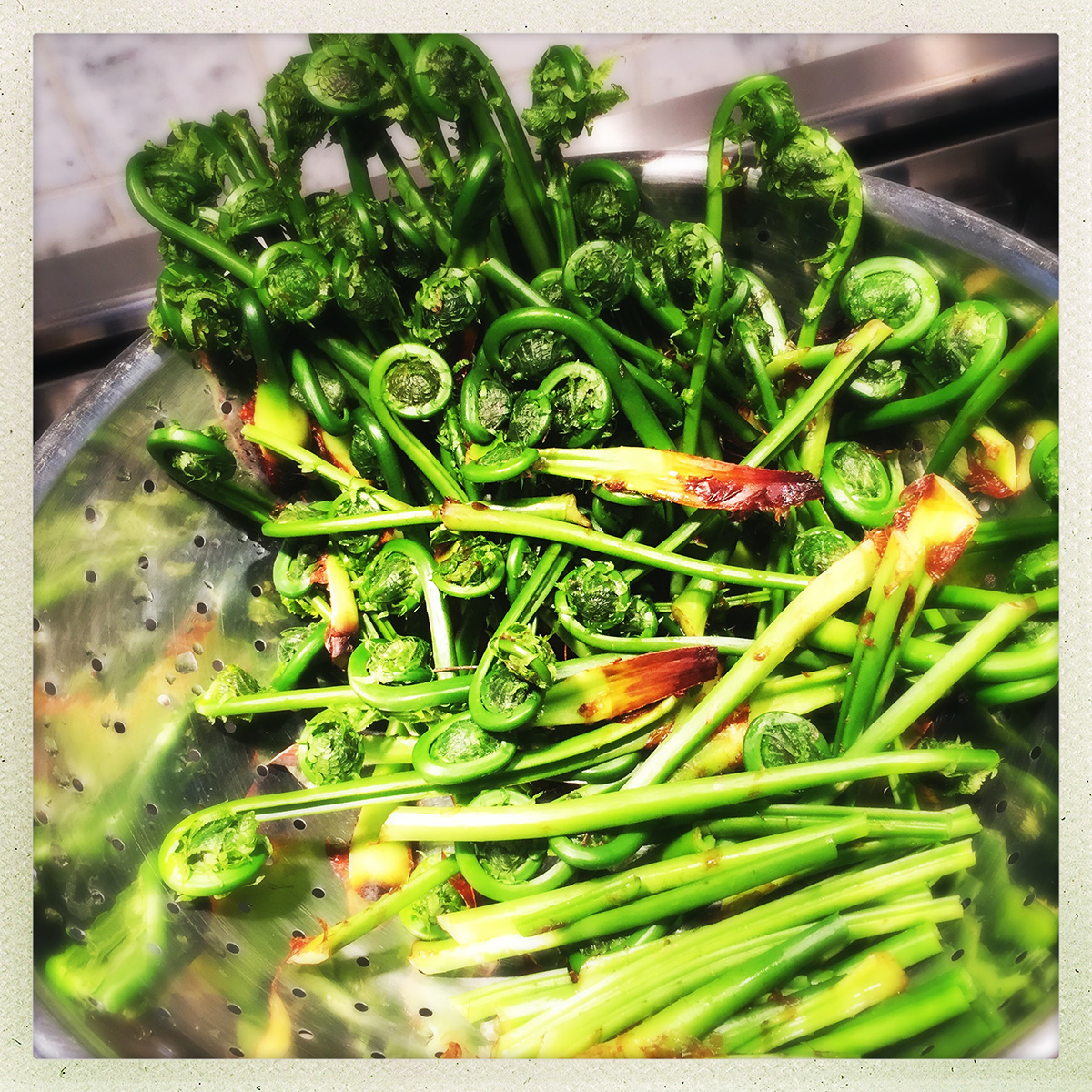
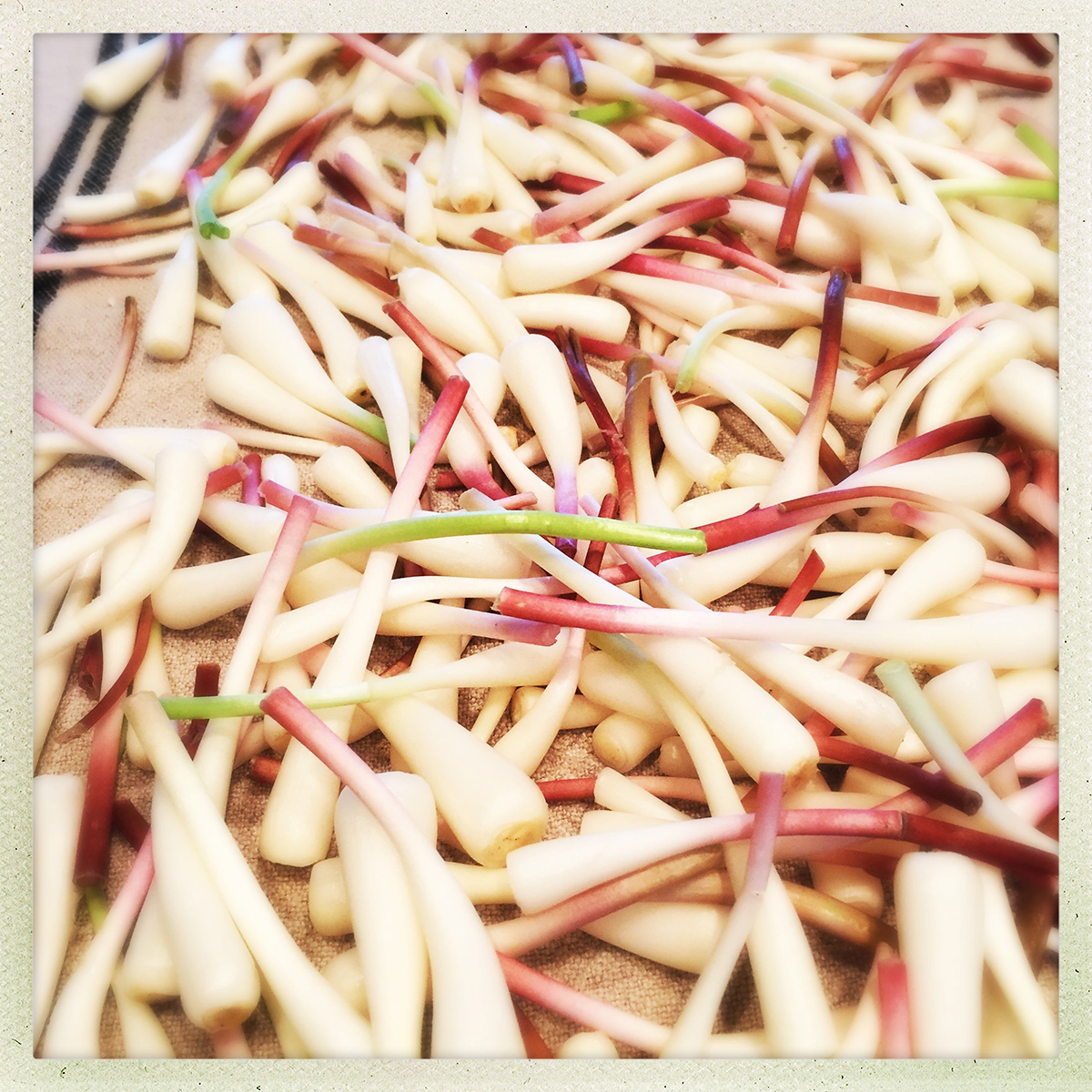
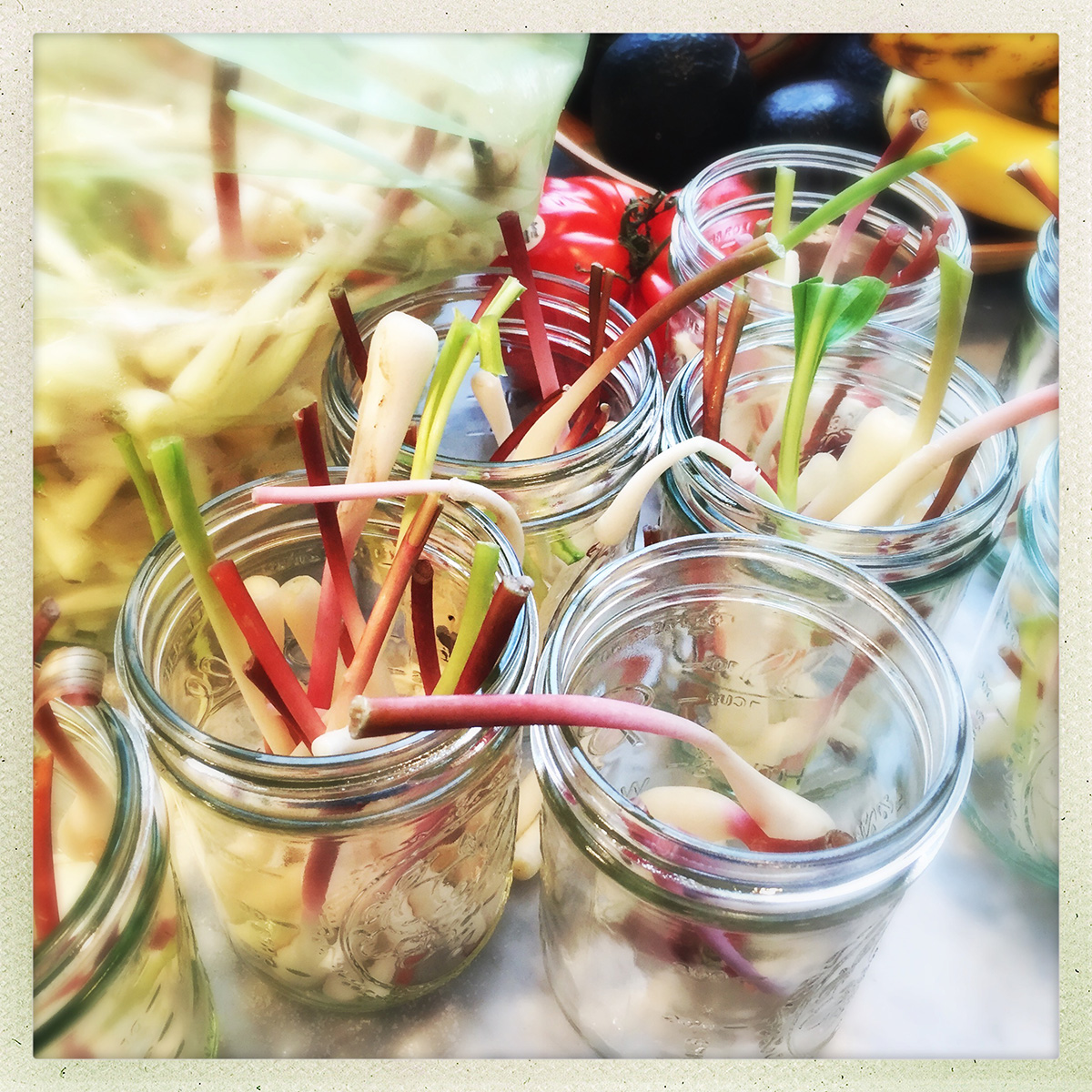
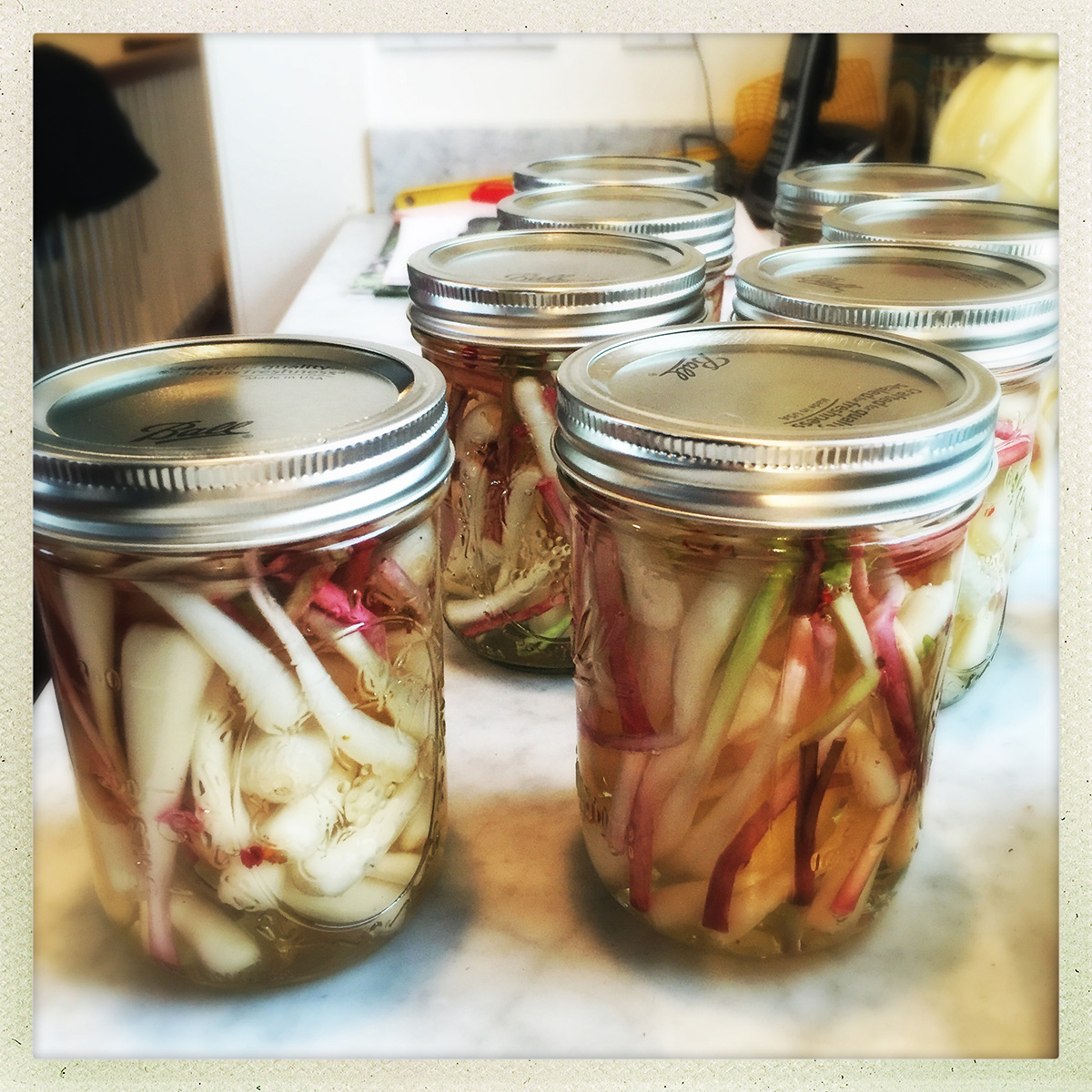
Pickled Ramps
Ingredients
1 lb of ramps cleaned and trimmed (see below)
Pickling brine:
2 cups sugar
2 cups rice wine vinegar
2 cups water
2 tbsp kosher salt
2 tsp black peppercorns
Note: I sometimes run out of brine when I’m filling my jars and then scramble to boil up another batch. I guess one could argue that doubling the brine recipe isn’t a bad idea, especially if you have a bounty of ramps. You can always use extra brine to pickle something else.
Clean the Ramps:
If you pay $20/lb at Whole Foods for already-cleaned ramps then you can skip the following step, but if you get them FOR FREE IN THE WOODS!! prepare to put a little sweat equity into the deal. I use the brute force of a hose to blast the mud, grit and outside layer off the ramp clump. This tends to separate them into individual scallion-esque bulbs and gets them right down to their nubile center. Once there, trim off anything yucky and slice off the dark green tops. (You can then steam that ramp greens like spinach, but you’ll get real tired of it real quick.)
Make the Brine:
- Combine all the brine ingredients in a small saucepan over medium-high heat and bring to a boil, stirring until the sugar and salt is dissolved.
Pack Up the Jars:
- Pack each jar tightly with ramps.
- Pour the brine over the ramps until each jar is full.
- Let the jars of ramps cool to room temperature then transfer to the fridge (or process and “put up”). You can eat these right away but they’ll be gnarly-strong. A few days of hanging out in the brine mellows them out. A few weeks, and they’re perfect.


